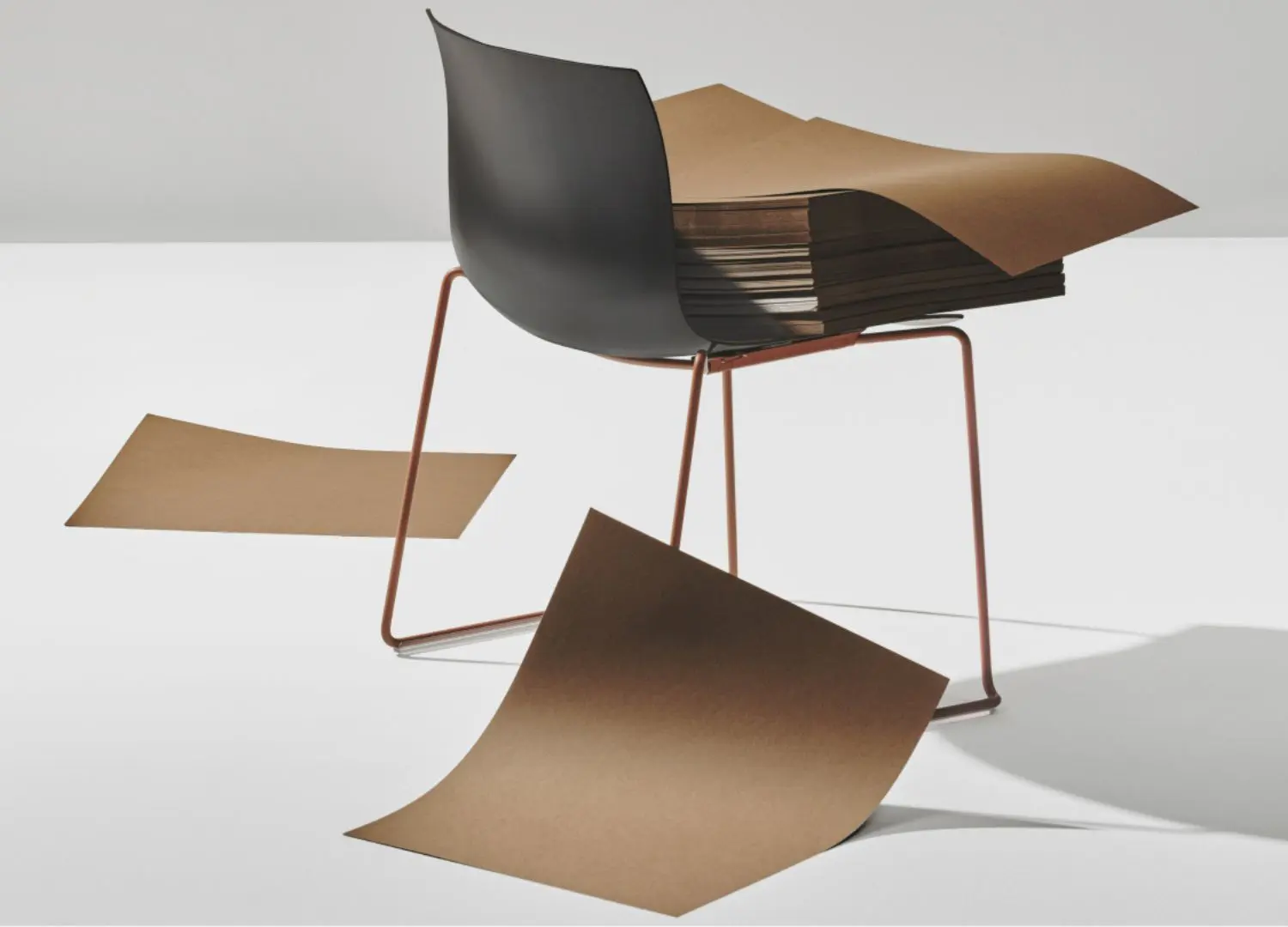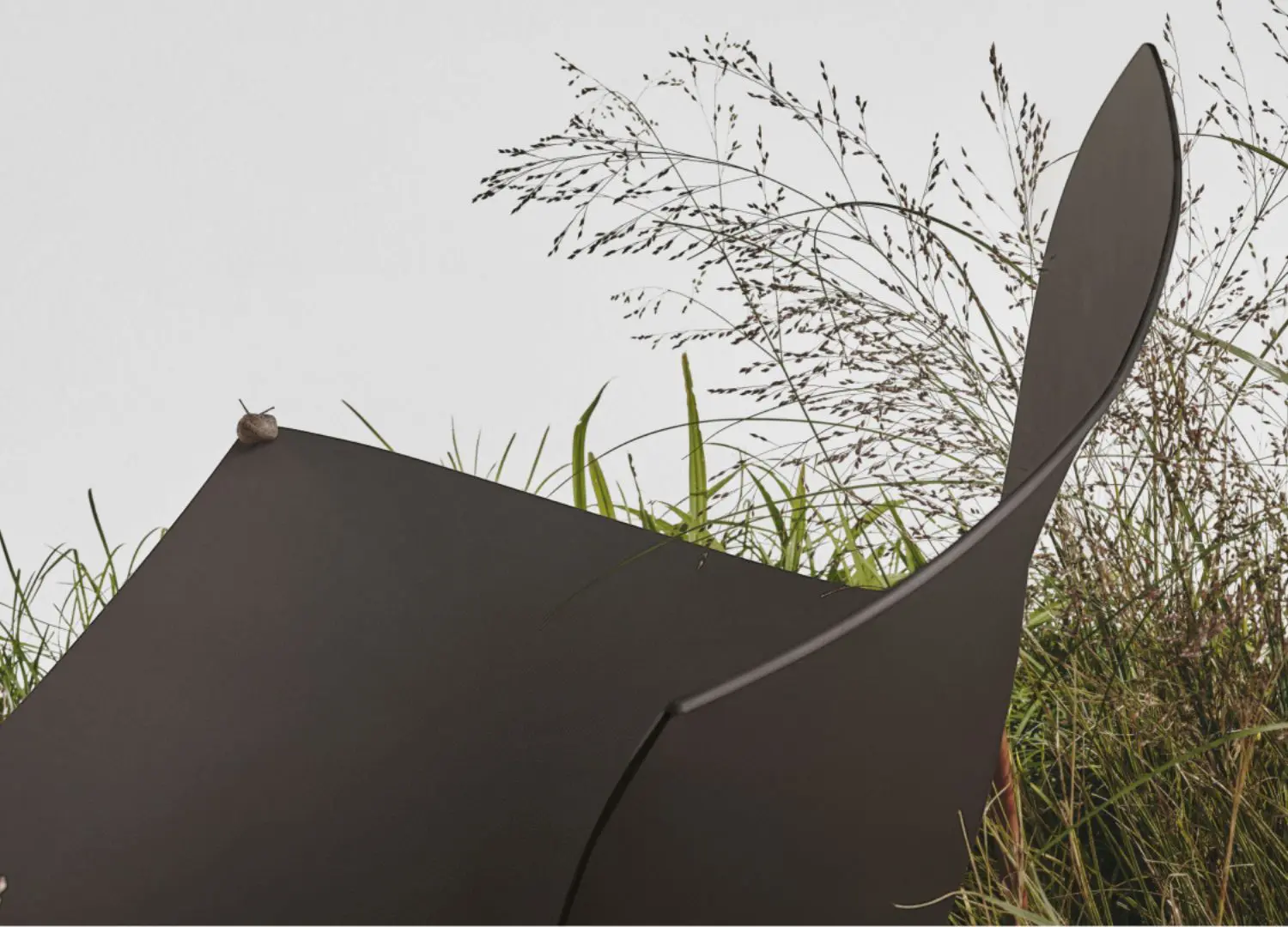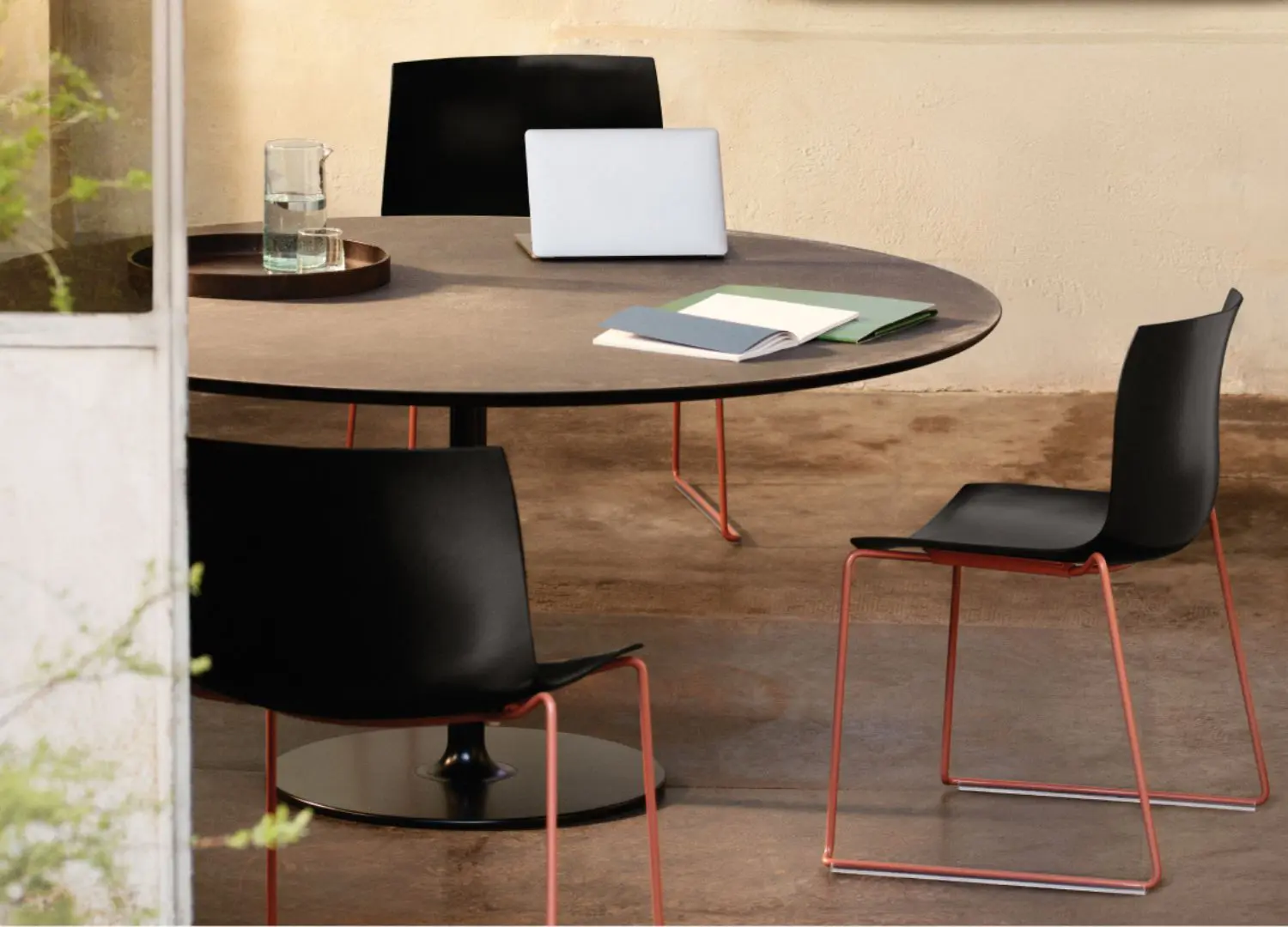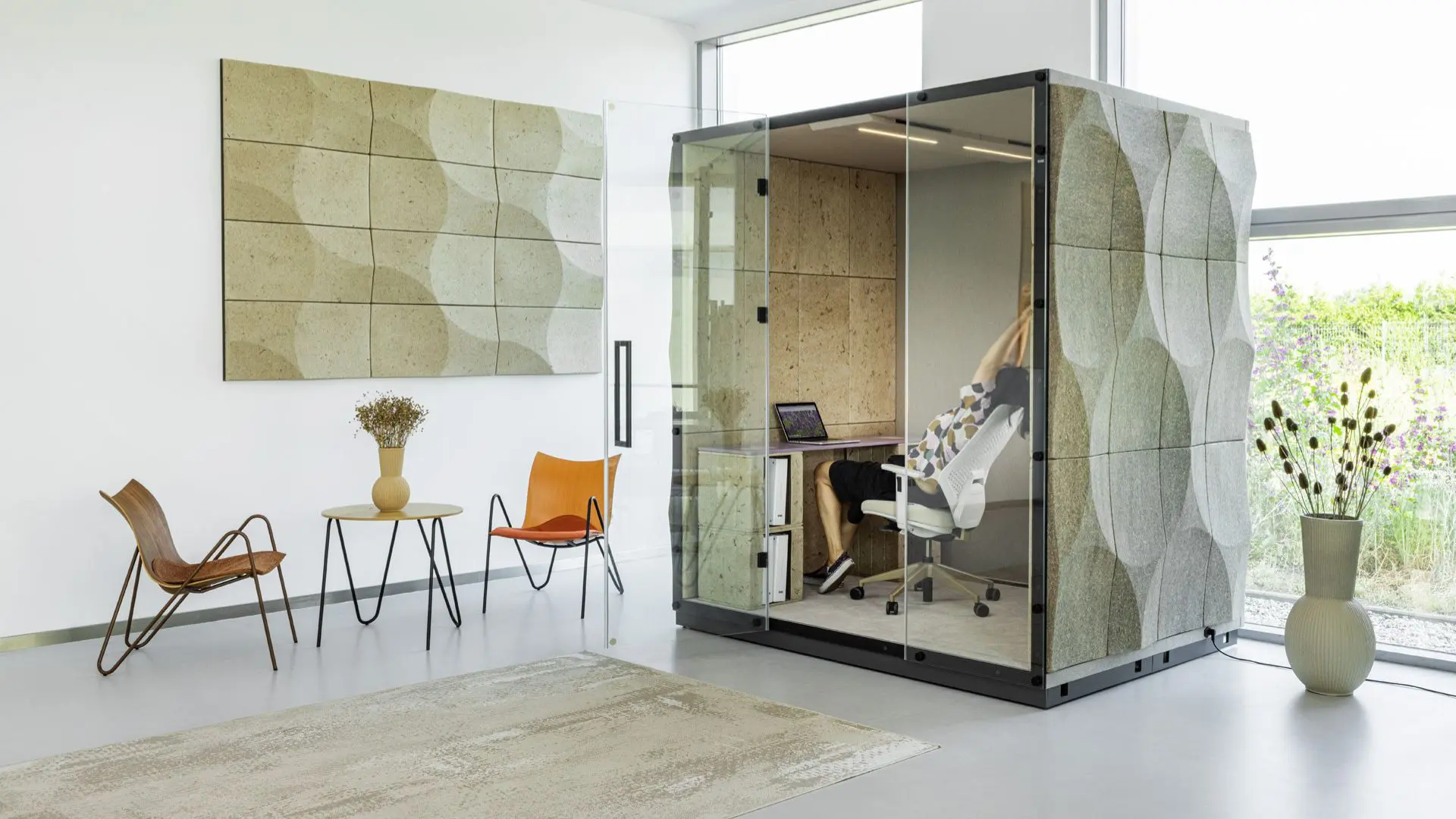Arper’s sustainable office chair replaces plastic with a dozen sheets of paper
Italian furniture brand Arper re-released its iconic Catifa Carta chair earlier this year, featuring a new composite material made from paper that the company claims can sequester carbon dioxide.

Founded in 1989, Italian design brand Arper has grown into a respected voice in the design community, building on a unique portfolio including chairs, tables, and furnishings for community spaces, workplaces and the home. At the heart of the brand lies a philosophy that views design as a form of expression and interaction, an ethos evident in Arper’s most recent innovation—an office chair is made out of paper.
It’s a collaboration between the Italian design company and PaperShell, which recasts an original design from 2001 by Spanish design Studio Lievore Altherr Molina. Established in the 1990s, this partnership also heralded the creation of other iconic pieces, including the Kinesit task chair, Leaf seating systems, Zinta and Loop sofas, and the Catifa chair collection, which is arguably its most iconic product to date.
Gallery
Open full width
Open full width
Gallery
Close full width
Close full width
Sustainability in practice: the Impact of PaperShell
Arper’s latest innovation transforms its classic design with a focus on sustainability, made possible through a pioneering partnership with Swedish startup PaperShell. Instead of the original’s sleek single-colour plastic, the new edition opts for the brand’s namesake material, a revolutionary composite crafted from wood waste.
PaperShell offers a sustainable alternative made from 29 layers of paper combined with a natural resin binder, a 100% biogenic hemicellulose based binder from agro-waste streams or pulp and paper production. This resin binder impregnates the substrates which are then stacked, pressed and cut into the desired shape, in this case a tridimensional silhouette.
The new iteration, named Catifa Carta, is said to be entirely circular and to significantly reduce environmental impact by capturing carbon dioxide throughout its lifecycle. According to PaperShell, the material operates as a carbon sink, meaning it absorbs more CO2 than it emits during production.
No trees are explicitly cut to produce the material, since it is made out of residues from Swedish wood production and timber by-products like sawdust, chips, and branches, which are then processed into the pulp that is used for PaperShell production.
The end-of-life management of the material is also key to utilising its full carbon potential. PaperShell material allows for a sustainable alternative to traditional incineration: the pyrolysis process. This burning process happens in absence of oxygen, hence avoiding the production of CO2 that would happen with a standard incineration process.
Thanks to pyrolysis, CO2 is no longer released in the atmosphere, instead it remains densely stored in the structure of the material resulting from pyrolysis, called Biochar, which not only sequesters carbon but also improves soil health and reduces greenhouse gas emissions in comparison to standard incineration practices significantly.
“Each kilogram of PaperShell effectively retains approximately 1.5 kilograms of CO2 equivalent, making it a potent tool in reducing carbon emissions,” says PaperShell.
“Biochar is made up of up to 90% carbon, which locks CO2 effectively, avoiding its release into the atmosphere. Science has proven that for every ton of carbon stored in biochar, about 3.67 tons of CO2 are prevented from entering the atmosphere.”
“The Biochar can be used as a soil enhancement and, in combination with mycelium and microbes, used as soil for regenerative reforestation and agriculture projects to promote biodiversity.”
Crafting with care: the making of Catifa Carta and PaperShell
Layered and compressed, this material emerges as a resilient and adaptable substance, perfect for a myriad of uses ranging from chair shells to electronic and automotive components, even extending to snowboards and beyond, as per PaperShell’s claims.
The final material is achieved through a meticulous moulding process, where heat, pressure, and humidity harmoniously interact, ensuring the durability and comfort integral to Catifa’s now iconic tridimensional silhouette.
Together, Arper and PaperShell experimented with various prototypes until they landed on a perfect balance. Minimalist legs and a gently sloping back mirror the original chair’s sleek silhouette, but instead of painting the finished chair or covering it in fabric, they decided to leave the PaperShell material visible.
The result is a dark, wood-like finish with natural imperfections that make each piece unique. There are multiple options for the metal base, including sled-style legs, four individual legs and a trestle base with or without wheels. All bases are available in black and the sled version is available in a rust finish.
The chairs can be fully disassembled, allowing them to be repaired and maintained to lengthen their lifespan. A convenient QR code will accompany each chair, providing comprehensive details on its material composition, maintenance requirements, and proper disposal methods at the end of its lifespan.
The future of design: innovation, collaboration, and responsibility
The key contributions of this project to emission mitigation are two: the avoidance of fossil carbon usage for plastic production through material substitution and the capability to sequester CO2 and store it in the ground. On top of it, another important aspect to take into consideration is the avoidance of emissions generated by the traditional production of soil amendment products.
“Catifa Carta marks a pivotal moment as we move forward in our journey to becoming a leading example of responsible business,” adds the brand. “It empowers us to meet the growing demand for sustainability within the industry, answering the question “what constitutes a sustainable living project?”
This milestone reflects the synergy between design and sustainability, showcasing the revolutionary use of PaperShell’s circular material in reinventing a beloved classic for a new era of conscious design. It also demonstrates Arper’s commitment to its three-part sustainability initiative, which includes commitments to improve the wellbeing of employees and consumers, the transition to a circular economy, and the reduction of its environmental impact.
Arper sets a new standard for sustainable design, which is no surprise. Since its establishment the brand has been at the forefront of Italian furniture craftsmanship, renowned for its innovative designs and cutting-edge processes.
“We are family owned and independently run, guided by strong values and deep sensitivity to those who use our products every day,” explains the brand. “The world is in constant change, and the solution we might need today might not be what we need tomorrow.”
“To respond and adapt, we create the strategies for a world in flux—shaping spaces and solutions, forwarding sustainable practices, pursuing new product innovations, and cultivating culture and ideas with thoughtful, life-centred design.”
As the first home design brand to partner with Papershell, Arper is leading the charge in embracing groundbreaking materials and technologies and setting a new standard for design excellence—one that prioritises the well-being of both people and the planet.









